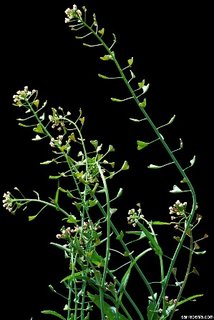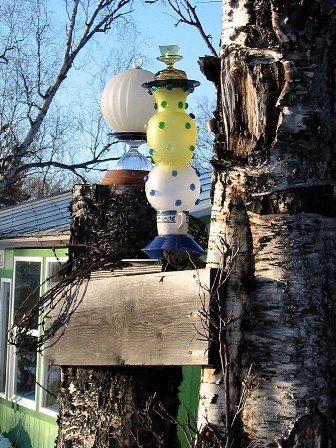DD Two
Gardeners who know me know I love really BIG plants. But, those are found in my garden and not in my workshop. I just spent the last month breeding a man-eating plant and nurturing it with anxiety, blood, sweat and tears! And she . . . Audrey 2 . . . really ‘eats’ actors. Audrey 2 is the carnivorous plant character from the play Little Shop of Horrors. Remember the movie with Rick Moranis as the dweebish Seymour who discovers the exotic plant that winds up eating his boss, his girlfriend Audrey, and Steve Martin’s wonderfully sadistic dentist character? That’s the plant! Instead of getting my nursery stock put away for winter and enjoying the last of my garden’s bloom, I’ve been living inside a giant theater prop cum carnivorous plant. The last time I did this I had to build a 25-foot tree with a 12-foot root base for the Legend of Sleepy Hollow. Hmmm. I think I’d rather be outside weeding on my knees than on my knees bleeding on chicken wire in the studio. Maybe theater plant props are all carnivorous. I know they eat the artists who build them. But, I digress . . .
Carnivorous plants don’t come from outer space and they’re not just found on stage or in exotic and tropical environments. We have some carnivores and semi-carnivorous botanical species living in the backyards and wilds of Alaska. A carnivorous plant has to attract, kill, absorb, and digest its prey. The semi-carnivores might rely on fertilization from the droppings of bugs eating smaller insect specimens caught on sticky plant surfaces or the compost created when those trapped insects are broken down by bacterial action.
 Capsella bursa-pastori - Shepherd's Purse (Photo: Dr. Barry Rice)
Capsella bursa-pastori - Shepherd's Purse (Photo: Dr. Barry Rice)
A common weed in your yard, Capsella bursa-pastori, commonly known as Shepherd’s Purse, is listed as a semi-carnivore. This widespread European mustard has seeds which release an adhesive compound when moistened. This traps small aquatic animals whose demise and composted remains appear to help fertilize the germinating seeds. Wow! Maybe this will work for mosquito larvae in our ponds. Shepherd’s Purse, notes Dr. Barry Rice, Director of Conservation International Carnivorous Plant Society, while”striking, it is not clear if this really means the plant is carnivorous. There are a few problems with this hypothesis---in particular, this plant does not grow in particularly wet areas, so why should its seed have a carnivorous technique that it cannot exploit? It is more probable that the seed's mucous has other valuable properties we have not yet figured out.” I’m still going to throw some in the pond next spring to see if it has an effect on the mosquito population. Of course, that might have a negative effect on the other species that rely on them for food. Oh, well . . . we can always cook the greens up for stir-fry.
 wilderness.
wilderness.Pinguica macrocera - winter bud stage (Photo: Dr. Barry Rice)
Speaking of Venus Fly Traps, have you seen the latest crop in our local stores? Did you know you can find Fly Traps that are red, pink, or almost dark wine colored? A trip to www.californiacarnivores.com, will take you to Cook’s Carnivorous Plants (they have a great animation introduction!) where you can purchase such aptly named varieties as ‘Red Dragon’, ‘Red Piranha’, ‘Big Mouth’, and ‘Fang’. Who knew they came in so many colors and sizes? If you’re tempted to buy one go online at Dr. Rice’s site for thorough instructions on how to keep these exotics alive or look for his new book “The Complete Grower’s Guide to Carnivorous Plants” just released this month by Timber Press.
Thanks to the folks at the Spenard Builder's Supply, Keenan & Deborah Retherford and Peter Ann at The Fence Emporium, Robin Wessel at Off Her Rocker, and neighbors Ahna and Chan Simonds for keeping me in glue, sanity, and digging out raspberries that were taking over the planet and my garden! And hats off the puppeteer Bowen Gillings for going along with this project! I just hope his back survives the run.
. . . . Now, I can get back to building my sculpture of a giant stylized calendula seed!

Little Shop of Horrors director Christian Heppinstall surrounded by 'the street goils' Crystal (Charlotte Kopp), Chiffon (Shelly Wozniak), and Ronnette (Sarah Alvarez). Photo sans chewing gum!
To see more photos of Audrey 2 go to www.woolwood.blogspot.com or to read Donna Freedman's article in the Anchorage Daily News about the building of the Audrey II go to www.adn.com/life/story/8218136p-8115053c.html




No comments:
Post a Comment